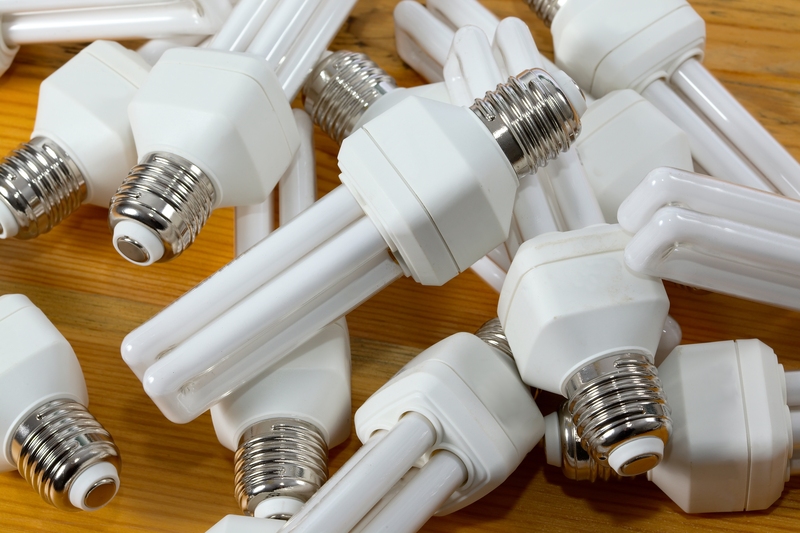Exploring Sustainable Packaging and Cardboard Recycling: The Future of Eco-Friendly Solutions
In an age where environmental responsibility is paramount, sustainable packaging and cardboard recycling have emerged as essential components of global efforts to reduce waste and mitigate climate change. Businesses and consumers are increasingly seeking packaging options that minimize environmental impact and contribute to a healthier planet. In this comprehensive guide, we delve deep into the world of eco-friendly packaging and the importance of recycling cardboard, uncovering innovative trends, benefits, and actionable strategies.

What Is Sustainable Packaging?
Sustainable packaging refers to the design and use of packaging solutions that, over their entire life cycle, have minimal negative impact on the environment. This includes the selection of renewable, recyclable, or compostable materials, reduction of packaging waste, and the implementation of production methods that consume fewer resources.
- Renewable Resources: Such as bamboo, paper, or bioplastics that can regenerate naturally.
- Recyclable Materials: Packaging that can be processed and reused, such as cardboard and certain plastics.
- Compostable Packaging: Materials that decompose naturally without leaving harmful residues.
By prioritizing these eco-friendly practices, both manufacturers and consumers can reduce their carbon footprint, conserve resources, and help address the global waste crisis.
Key Characteristics of Sustainable Packaging
- Resource Efficiency: Using fewer materials and energy during production.
- Minimized Toxicity: Avoidance of harmful chemicals and dyes.
- Lifecycle Approach: Considering the product from creation to disposal or renewal.
- Reusability: Designing packaging that can be repurposed or refilled.
The Importance of Cardboard Recycling
As one of the most widely used packaging materials, cardboard plays a pivotal role in shipping, retail, and everyday life. Cardboard recycling helps to prevent the buildup of waste, saves trees, and reduces greenhouse gas emissions associated with landfill disposal and raw material extraction.
Why Recycle Cardboard?
- Reduces Deforestation: Recycling cardboard mitigates the need for new pulp, preserving forests.
- Saves Energy: Producing recycled cardboard uses less energy compared to new material.
- Decreases Pollution: Landfills emit methane and leach harmful substances; recycling minimizes this impact.
- Lowers Greenhouse Gas Emissions: Recycling one ton of cardboard saves nearly 9 cubic yards of landfill space and prevents CO2 release.
According to the Environmental Protection Agency (EPA), approximately 70% of all cardboard is successfully recycled in the United States each year. This impressive recycling rate underscores the vital role of consumer and industry participation in eco-friendly packaging solutions.
The Cardboard Recycling Process: Step by Step
Understanding how cardboard is recycled can inspire better habits at home and in business. Here is the basic process:
- Collection: Cardboard is collected from homes, retail stores, and commercial facilities.
- Sorting: The material is separated by type and grade to ensure quality during recycling.
- Shredding & Pulping: Cardboard is shredded and mixed with water to break it down into fibers.
- Screening & Filtering: The pulp mixture is screened to remove contaminants like plastic or staples.
- Rolling & Drying: The clean pulp is pressed and dried into sheets of new cardboard.
- Distribution: The recycled material is converted into new products, completing the closed-loop cycle.
Innovations in Sustainable Packaging Design
The evolving landscape of eco-friendly packaging is driven by innovation, technology, and a commitment to circular economy principles. Today's packaging engineers and product designers leverage new materials, smarter processes, and creative thinking to deliver sustainable solutions.
Recent Trends and Examples
- Edible Packaging: Packaging made from food-grade materials, such as seaweed or rice, can be safely consumed after use.
- Plant-Based Plastics: Bioplastics derived from renewable plant sources replace conventional petroleum-based plastics.
- Compostable Mailers: Poly mailers made from cornstarch or other biodegradable ingredients decompose in compost bins.
- Minimalist and Lightweight Packaging: Reducing the volume and weight of packaging reduces transportation emissions and waste.
Several major brands have adopted these innovative approaches. For example, Amazon has implemented Frustration-Free Packaging, while Coca-Cola invests in PlantBottle technology and recycled PET.
Benefits of Sustainable Cardboard Packaging
- Economical: Recycled cardboard is often less expensive than new material.
- Customizable: Easy to print, cut, and shape to fit a variety of products.
- Protective: Strong and durable, making it ideal for shipping and storage.
- Renewable: Sourced from managed forests and readily recyclable.
Challenges in Cardboard Recycling
Despite its many advantages,
Common Issues
- Contamination: Cardboard soiled by food or oil often cannot be recycled and may end up in landfills.
- Lack of Awareness: Not everyone knows how or where to recycle cardboard properly.
- Transportation Costs: Collecting and transporting low-density cardboard can be expensive, especially in rural areas.
- Market Fluctuations: The value of recycled cardboard changes with global demand and commodity pricing.
Overcoming these obstacles requires ongoing education, improved infrastructure, and participation from both businesses and consumers.
How Businesses Can Embrace Sustainable Packaging
For companies seeking to reduce their environmental impact and appeal to eco-conscious customers, sustainable packaging is a strategic advantage. Here's how businesses can embrace green packaging practices:
1. Conduct a Packaging Audit
Evaluate current packaging materials and processes to identify areas for improvement or reduction. Consider switching to recyclable, compostable, or reusable alternatives where possible.
2. Source Responsibly
Work with suppliers who use certified sustainable materials, such as FSC-certified cardboard, and emphasize supplier transparency throughout the supply chain.
3. Innovate with Design
Prioritize designs that use less material or incorporate secondary uses (e.g., packaging that transforms into storage, toys, or containers).
4. Educate Your Customers
Clearly label packaging with recycling instructions and promote clear messaging about the value of cardboard recycling.
5. Participate in Take-Back Programs
Initiate programs that encourage packaging returns for reuse or recycling, which fosters a closed-loop system.
The Role of Consumers in Promoting Recycling
Consumers are key players in the success of sustainable packaging and cardboard recycling efforts. Choosing products with recyclable packaging and following best practices can have a significant environmental impact.
Best Practices for Cardboard Recycling
- Keep it clean: Remove any food, grease, or residue before recycling.
- Flatten boxes: Save space and make collection more efficient by flattening cardboard boxes.
- Check local guidelines: Some programs have specific rules about what types of cardboard are accepted.
- Separate materials: Remove any plastic, foam inserts, or non-cardboard materials before recycling.
By making these small changes in daily habits, consumers can help ensure the effectiveness of recycling programs and push businesses towards greener packaging choices.
The Environmental Impact of Sustainable Packaging & Cardboard Recycling
Reducing the environmental footprint of packaging is critical in fighting global climate change. Eco-friendly packaging--when combined with widespread cardboard recycling--yields substantial environmental benefits:
- Resource Conservation: Preserves forests and reduces water and energy consumption.
- Waste Reduction: Diverts significant volumes of material from landfills and oceans.
- Pollution Prevention: Cuts down on landfill gas and leachate, which can contaminate air and water.
- Circular Economy: Stimulates jobs in recycling and remanufacturing, fostering sustainable economic growth.

The Future of Sustainable Packaging and Cardboard Recycling
As regulations around packaging waste become stricter and consumer demand for sustainable solutions rises, the landscape of eco-conscious packaging is likely to expand rapidly. Early adopters of these eco-friendly practices will gain a competitive edge, bolster brand reputation, and inspire broader changes industry-wide.
Emerging Technologies and Materials
- Smart packaging: Incorporating sensors for shelf life, supply chain, and waste tracking.
- Water-soluble packaging: Completely dissolves in water, leaving zero waste behind.
- Mycelium-based materials: Packaging grown from fungi, offering full biodegradability and strength.
Advancements in biomaterials, automation, and circular economy strategies point toward a future where packaging waste is greatly minimized, and resources are used with maximum efficiency.
Conclusion: Committing to a Greener Tomorrow
Sustainable packaging and cardboard recycling are not only ethical choices--they are necessary steps toward ensuring a healthy planet for generations to come. Through collective action by businesses, governments, and individuals, we can foster a more responsible and sustainable approach to packaging and waste management.
By exploring alternatives, embracing innovation, and supporting effective recycling programs, everyone can play a part in building a circular economy. Make a difference today by choosing products with eco-friendly packaging, recycling your cardboard, and advocating for a sustainable future.
Further Reading on Sustainable Packaging and Cardboard Recycling
Every box recycled is a step toward a cleaner and more sustainable world. Join the movement toward sustainable packaging and cardboard recycling today!